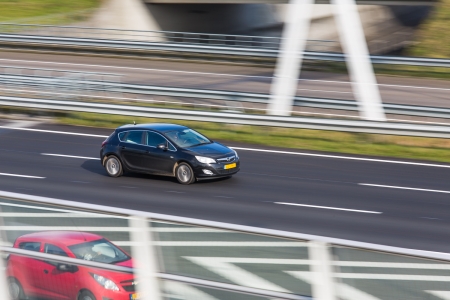Road safety is not only affected by average speed, but also by speed differences. This may be considered in two different ways: at the level of the individual driver (is crash risk higher for a driver whose speed is higher or lower than the average speed on that road?), and at road level (are there more crashes on roads with greater speed differences?) [2] [14].
Individual level
Vehicles that drive at a speed that is higher than average on that road, run a higher crash risk; vehicles that drive at a lower than average speed do not run a higher or lower risk. Older studies [16]) for example) often found that risk increased for vehicles driving at both a higher and a lower than average speed. In these studies, however, cars manoeuvring at a low speed were also included, and in those cases it was probably the manoeuvring that increased the risk and not the low speed. More recent studies that exclude this type of crash, only find an increased crash risk for vehicles driving at a higher speed and not for vehicles driving at a lower speed [17] [18] [19] [20].
Road level
Greater speed differences between vehicles at road level, i.e. at the same time and place, are linked to a higher crash risk. It is impossible to quantify this link. The results of different studies and their research methods are too divergent to conduct a sound meta-analysis. Elvik concluded as much on the basis of 13 studies of the link between speed differences and crash risk, using loop detector data (Elvik, 2014; in: [14]).
